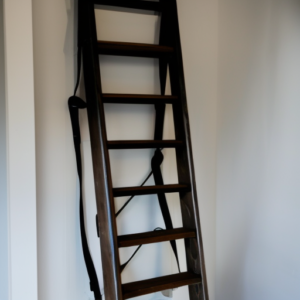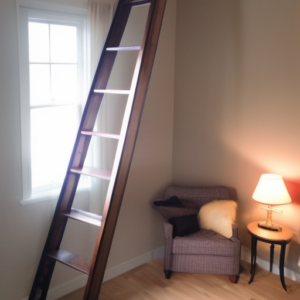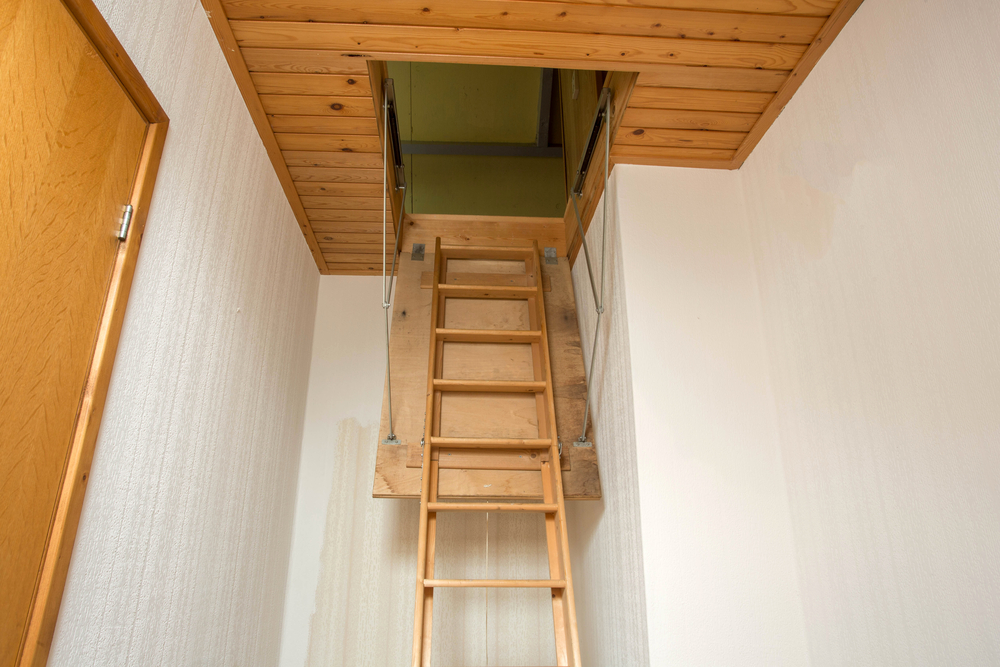Last Updated on January 26, 2023
Are you in the UK and planning to buy a loft ladder? You should know that there are certain regulations set by the government when it comes to purchasing and using them. Don’t worry, we’ve got all the information you need! So don’t forget: if you’re buying or using any loft ladder in the UK, make sure that you read up on those important loft ladder regulations first!
Table of Contents:
- What Are the UK Loft Ladder Regulations?
- FAQs in Relation to Loft Ladder Regulations in the Uk
- Conclusion
What Are the UK Loft Ladder Regulations?
The UK has specific regulations in place when it comes to loft ladders. It is important to be aware of these regulations before purchasing and installing a ladder, as failure to do so could result in fines or other penalties.
Types of Loft Ladders: The type of loft ladder you choose must meet the requirements set out by the Building Regulations 2010. This includes any permanent access ladders that are used for accessing lofts, such as telescopic ladders, concertina ladders and folding wooden steps. Any temporary access equipment should also meet British Standard BS 5395-2:2008+A1:2012 (or equivalent).
Installation Requirements: All permanent access ladders must be securely fixed at both top and bottom with appropriate fixings for the material they are being attached to. They must also have secure handrails on either side for added safety when climbing up or down them. Furthermore, there should be an adequate landing area at the top of the ladder, which allows enough space for a person to stand safely without the risk of falling off or slipping back down again.

Ensure Secure Fixings: Once installed, it is important that all loft ladders are regularly inspected and maintained in order to ensure their continued safe use. Check all fixings periodically – if they become loose, then tighten them up using suitable tools – and make sure that any moving parts move freely without sticking or jamming during operation. Additionally, always wear appropriate footwear when using a loft ladder; this will help provide extra grip on potentially slippery surfaces like metal rungs or wooden steps. Finally, never attempt to climb a damaged or faulty ladder; instead, contact your local building control department, which can advise you further on how best to proceed with repairs/replacement where necessary.
It is important to be aware of the UK loft ladder regulations before purchasing one, as this ensures that you are choosing a product which meets all safety requirements.
FAQs in Relation to Loft Ladder Regulations in the Uk
What are the requirements for a loft conversion UK?
In the UK, loft conversions require planning permission from your local authority. The minimum headroom required is 2.2m, and you must ensure that any existing joists are capable of supporting the additional load. Building regulations also apply and may include requirements for fire safety, insulation, ventilation, electrical wiring and drainage. You should also consider whether any structural alterations are necessary to support the new floor or roof structure. Finally, check with a qualified builder to ensure that all work meets current building standards before commencing any project.
How steep can loft stairs be in the UK?
The maximum angle of a loft stair in the UK is 42 degrees. This is determined by Building Regulations, which state that any stairs with an angle greater than 42 degrees must have handrails installed on both sides for safety reasons. The ideal angle for a loft stair should be between 36 and 38 degrees to ensure comfortable use. It’s important to consider the space available when choosing your staircase, as steeper angles will require more headroom and floor space.
Are UK loft hatches a standard size?
No, UK loft hatches are not a standard size. The exact dimensions of the hatch will depend on the manufacturer and the type of product you have purchased. Generally speaking, they range from 600mm x 600mm to 900mm x 1200mm in size. It is important to measure your existing opening before purchasing a new loft hatch, as this will ensure that it fits correctly and securely into place.
Do you need building regs for loft stairs?

Yes, you need building regulations for loft stairs. This is to ensure that the stairs are safe and fit for purpose. Building regulations cover a range of areas, including structural stability, fire safety, access and use of the space. It’s important to check with your local authority as requirements may vary depending on where you live in the UK. If you’re unsure about what’s required, it’s best to consult an experienced builder or architect who can advise on the necessary steps needed to meet building regulations standards.
What regulations do loft conversions require?
In the UK, loft conversions are subject to a range of regulations. These include Building Regulations approval from your local authority and compliance with any relevant planning permission requirements. The conversion must also meet fire safety standards, as well as energy efficiency guidelines set out by the government. Additionally, structural calculations may be required to ensure that load-bearing walls and floors can support the extra weight of a converted loft space. Finally, ventilation is essential for healthy living conditions in the new space – this should be taken into account when designing your conversion project.
Do you need building regs for a loft hatch?
Yes, you do need building regulations for a loft hatch. This is because it is considered an alteration to the structure of your home and must meet certain safety standards. Building regulations are in place to ensure that any alterations made are safe and fit for purpose. It’s important to check with your local authority before making any changes, as they will be able to advise on what needs to be done in order for the work to comply with current legislation. They may also require you to submit plans or drawings, so make sure you have these ready before starting any work.
Conclusion
In conclusion, it is important to be aware of the UK loft ladder regulations when purchasing and installing a loft ladder. Choosing the right type of ladder for your needs is essential in order to ensure safety and convenience. Additionally, regular maintenance and following safety tips can help you get the most out of your investment while staying safe at all times. By understanding these guidelines, you can make sure that your home meets all necessary requirements when it comes to loft ladders in the UK – so don’t forget about those loft ladder regulations!
Paul is the type of person who never met a problem he couldn’t fix. He can always be found tinkering with something in his house, even if it isn’t broken! His tips and tricks are often shared on our site. He’s the one you call when something breaks because he has been known to improvise fixes for everything from leaky faucets to malfunctioning dryers.

